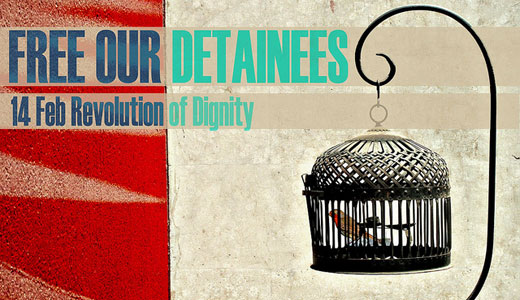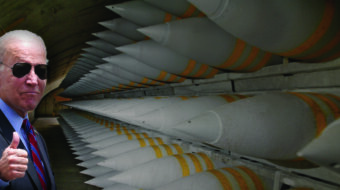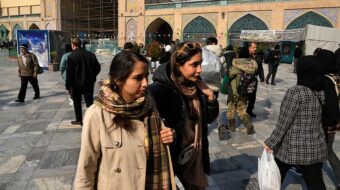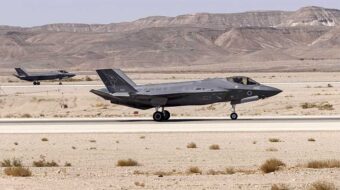
Dissidents continue to organize protests against the government of Bahrain, a Persian Gulf kingdom known for its pearl fisheries but also for its large scale oil production and its hosting of the U.S. Fifth Fleet.
Bahrain is an island of 1.2 million inhabitants off the north coast of Saudi Arabia, to which it is connected by a causeway.
The tiny kingdom has been the focus of a power struggle between its two important neighbors, Iran and Saudi Arabia, with the latter being backed by the United States.
To understand what’s going on, a little history is important.
Bahrain has been overwhelmingly Muslim since its leaders were converted by emissaries of the Prophet Mohammed more than 1,300 years ago. Since Iran (then called Persia) to the north opted for Shia Islam as its official religion in the early 16th century, Bahrain has been majority Shia. But in 1793, a Sunni clan from the Arabian mainland, the Al Khalifa, conquered the Island and have ruled it ever since.
During the 19th century, the United Kingdom became the main military power in the Persian Gulf, and the rulers of Bahrain found themselves increasingly subordinate to the British. Persia/Iran made periodic efforts to assert control over Bahrain, continuing into the 20th century.
After the warships of the world’s navies were converted from coal to oil during World War I, the Gulf states, formerly sleepy backwaters, were destined to gain importance beyond their small size. After that war, the Al Saud family conquered most of the Arabian Peninsula, naming it after themselves: Saudi Arabia. This country, too, has acquired importance vastly out of proportion to its small population, because of its massive oil production and reserves.
In Bahrain, the Al Khalifa family found itself in the difficult situation of being absolute Sunni monarchs ruling over a majority Shia population. Unrest was inevitable. It has come from the socialist, communist and liberal secular left, from workers, the Shia leaders and masses, and from some Sunnis who either disagree with the regime on principle, or who feel they have been left out of the prosperity generated by Bahrain’s oil.
In the 1990s, there were strong protests against the monarchy, which were savagely repressed with at least 40 fatalities and many complaints of torture and other atrocities. At the end of that decade, the new ruler, Hamid bin Isa al Khalifa, made some liberal concessions to the opposition. In 2002, he changed his title from Emir to King.
But when the Arab Spring of 2011 toppled the governments of Tunisia and Egypt, and put major pressure on all Arab states, Bahrain became a focus of large-scale protests demanding more democracy and social and political justice. Huge demonstrations took place at the Pearl Roundabout (traffic circle) in the capital, Manama.
The government, which likes to present itself as an enlightened constitutional monarchy, was divided as to how to respond, but finally cracked down, with tear gas, torture and prosecution of 21 opposition leaders plus 20 doctors and nurses who had treated injured protesters. Between the outbreak of the protests and the beginning of this year, some two dozen people have died from tear gas inhalation alone, and there are widespread reports of vicious torture at the hands of the authorities. Troops from Saudi Arabia and the United Arab Emirates were brought across the Kin Fahd Causeway to help crush the protests.
The government has proposed reforms, which were passed in the parliament and endorsed by the king this week, but these are considered cosmetic by the opposition. This year once more, despite government promises, demonstrations have been going on not only in the capital but in villages too.
Meanwhile, the government tore down the Pearl Roundabout and is replacing it with an intersection named for Umar, Second Caliph of Islam under whose rule Bahrain became Muslim but who is viewed negatively by Shiites and who was assassinated by an Iranian in 644 A.D. The government, perhaps not coincidentally, accuses the protesters and oppositionists of being supported by Shiite Iran. In fact, the opposition includes Shia Islamists in Al Wefaq, communists in the Democratic Progressive Tribune (political parties are not allowed), ex-Maoists in National Democratic Action, and others.
The Bahraini opposition continues to call for the democratization of the upper house of the Parliament (the members are currently appointed by the king), for the release of prisoners including human rights campaigner Abdulhadi Al Khawaja, who is on a prolonged hunger strike, and for release of the medical personnel arrested for treating injured protesters last year. The courts ordered a new trial for some of the prisoners, but they are still behind bars.
On April 22, Bahrain hosted its annual Formula One Grand Prix auto race. In the week leading up to the race, the opposition managed to put on a show of its own, with widespread protests designed to capture the attention of foreign reporters.
The continued turmoil in Bahrain is a worry for the U.S. government, because of ongoing tensions with Iran and especially because of the large U.S. military presence in the area. As home base for the U.S. Fifth Fleet, it is a potential staging area for any military action directed at Iran.
Image: Bahrain Youth for Freedom // CC 2.0












Comments